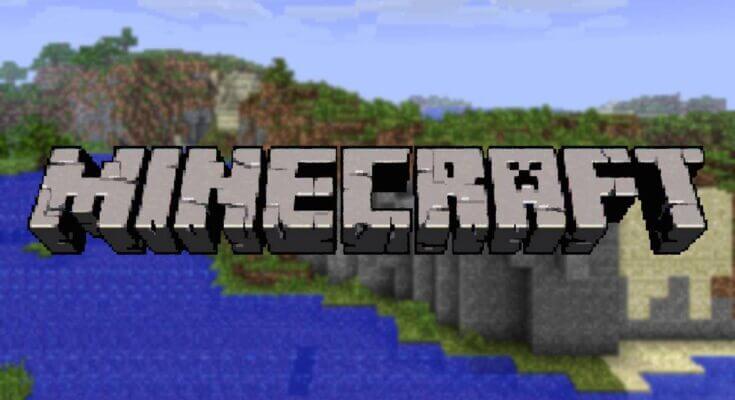Minecraft is a sandbox game, developed by Mojang, allowing you to build various things in a world made of cubes. It has several game modes, including the “survival” mode in which you will have to survive the attacks of many enemies, get you resources and food as well as build many items and tools. The open world is almost endless and offers countless possibilities. Thus, we can quickly feel lost. Where do you start when starting in Minecraft?
The open world
The world is created randomly. It contains different biomes and it is almost infinite. There are two phases of equal duration in Minecraft:
- Day : allows us to explore the world, collect food and resources, build, etc.
- Night : enemies such as monsters will appear in the darkness and attack you.

Biomes
Minecraft has a few different biomes that each have their own landscapes, animals, flora, fauna and sources. You will be spawned in a random biome at the beginning of the game. Therefore, quickly understanding the resources and fauna will prove essential. Here are the principal biomes you might encounter in the game.
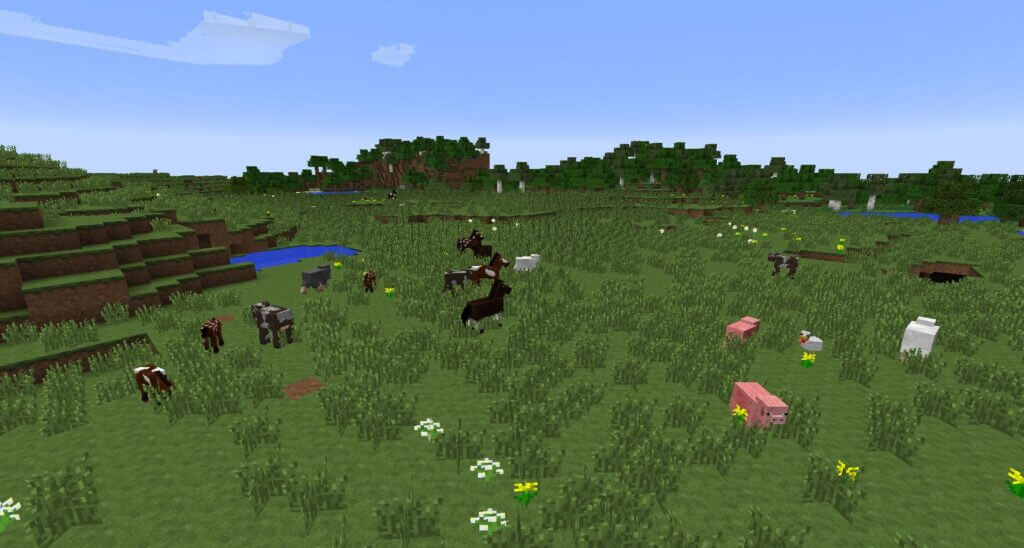
Plains :
The most common biome in the game. Spawns many types of animals such as cows, sheep, horses, pigs and bees, as well as plants such as flowers. You might find entrances to caves to collect minerals. The Plains are tempered and sometimes get rain.
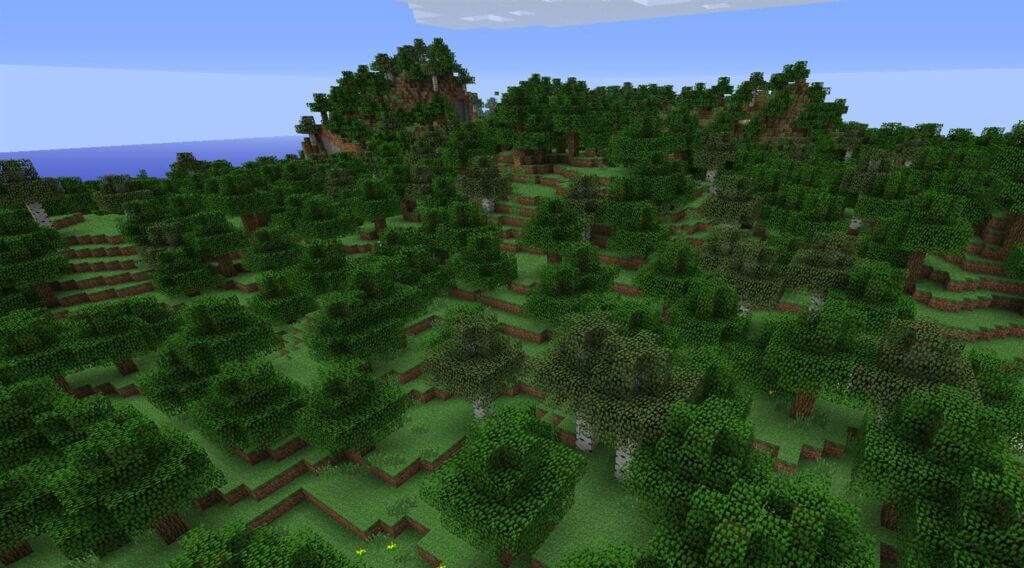
Forest :
It’s the ideal biome to start in Survival Mode, since it has most basic resources you might need to build, craft and survive. There are trees (trees in the forest, novel concept I know), mostly oak and birch trees. Common animals are wolves, rabbits and foxes. This tempered biome sometimes gets rain.
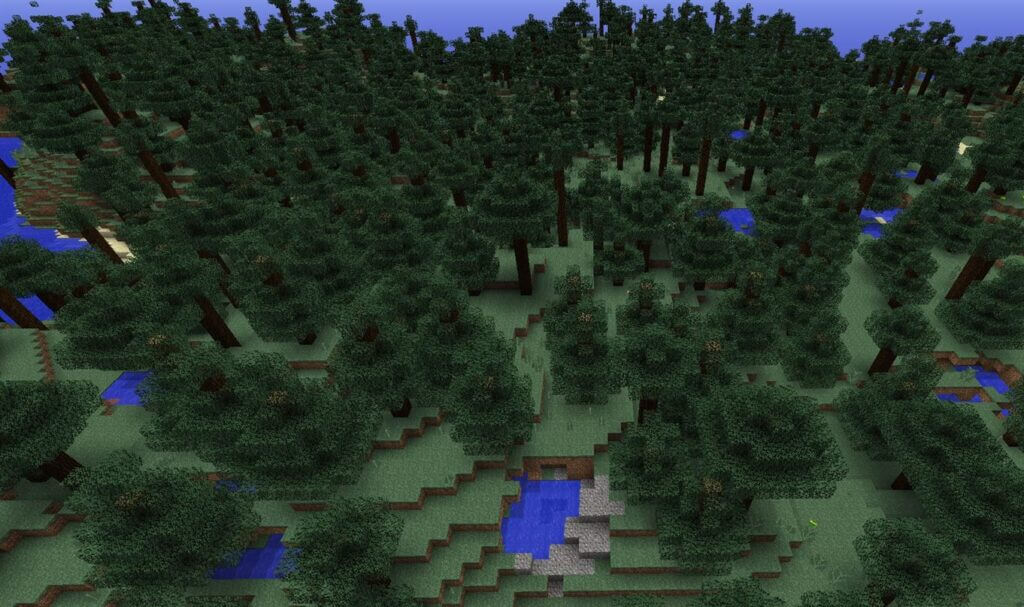
Taiga :
The Taiga is a forest mostly composed of conifer trees (pine) and ferns. It’s a tempered biome that sometimes gets rain, and snow in the highest peaks. Wolves are extremely common, but you might also encounter rabbits and foxes just like in the forest.

Jungle :
The Jungle is a luxuriant biome where it rains often. Exotic trees and vines make up most of the vegetation. Fauna is largely composed of basic forest animals as well as pandas, ocelots and parrots.

Mountain :
Mainly made of rocks, the mountain biome is mostly barren. Highest peaks sometimes get snow and a few trees. You might encounter the basic forest animals, but also llamas.
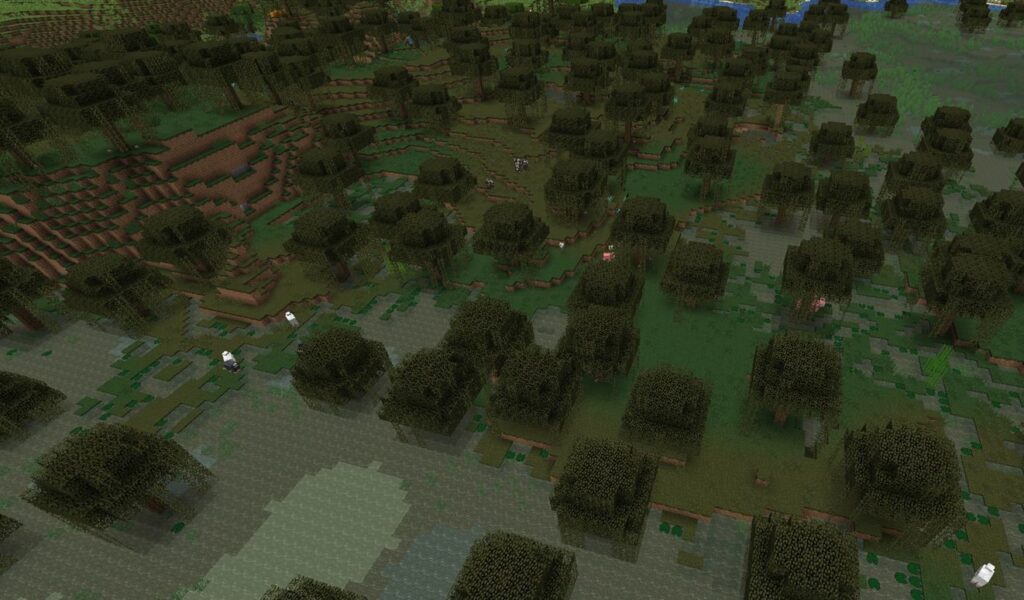
Swamps :
The Swamps are right between land and water. Resources include underwater plants and clay, as well as some forest animals. Swamps host witches and slimes, which makes it a little more harder to navigate for new players.

Savanna :
The Savanna is warm and dry, but some plants and animals still thrive. Acacia trees, tall weeds and horses are the main resources.
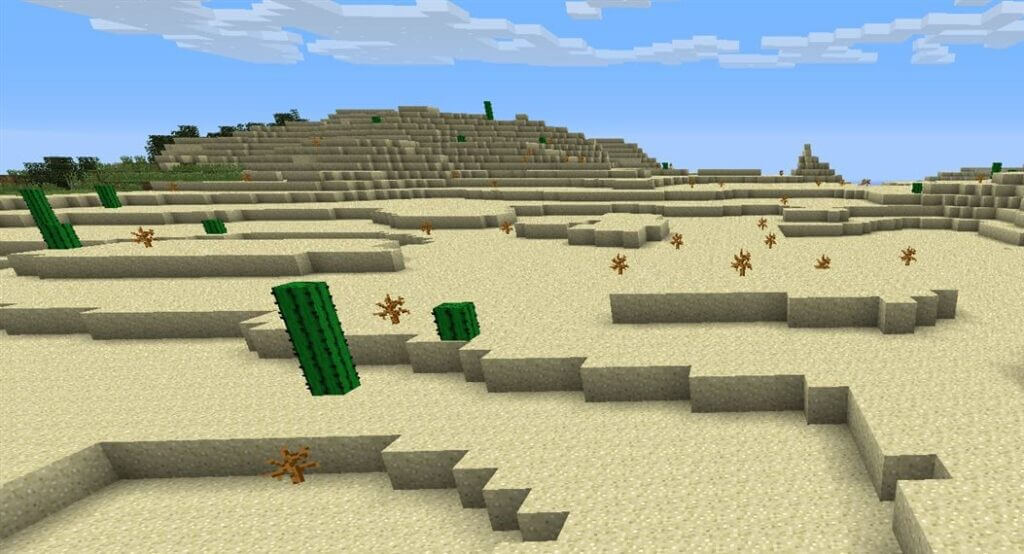
Desert :
The Desert is warm and dry and never gets any rain. No animals live in the Desert, but you might encounter some monsters such as mummies. Flora is mainly composed of cacti and dead trees.
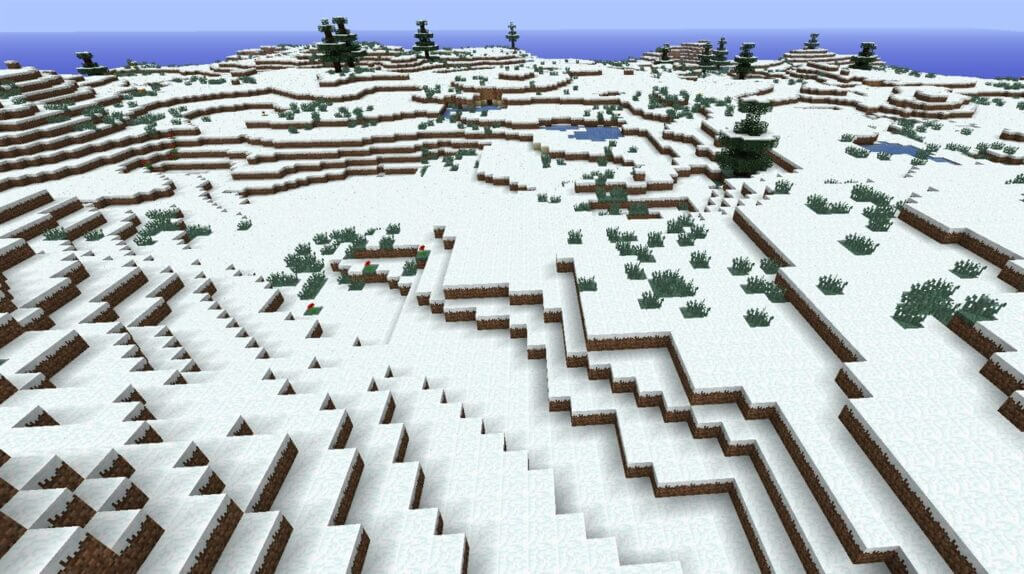
Snowy Tundra :
Cold and snowy biome. There are few animals and plants, except some conifer trees and polar bears.
Objective : Survive The First Night
Building a workbench
In order to survive the first night, it’s essential to have the required equipment. First, we will break a tree to harvest wood. We will place our log cubes in the inventory. In the crafting menu (accessible from the inventory), we will convert our log cubes into planks. (1 log = 4 planks.) We will then convert some planks into wooden sticks. With 4 boards, we will be able to make a workbench. This will allow us to craft what we will need later. The crafting guide can be accessed by selecting the book to the left of the crafting slots.
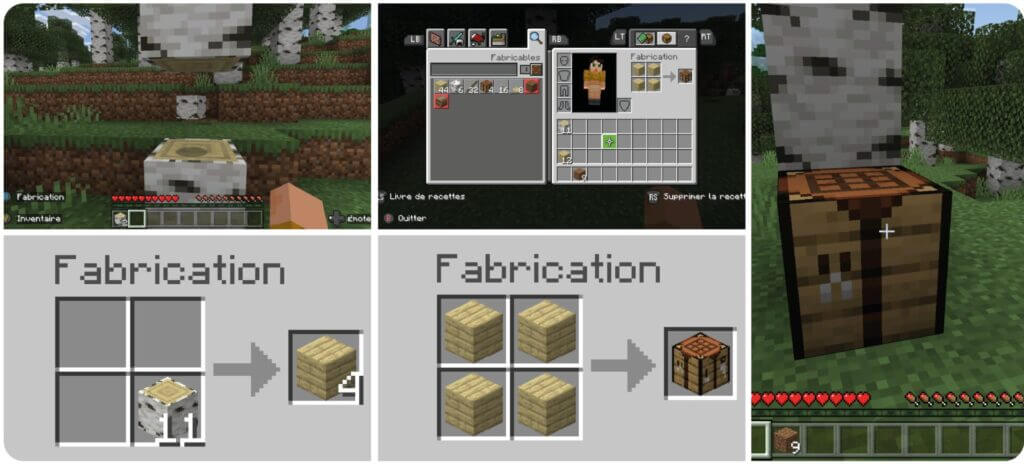
The basic tools
We will make the basic tools so that we can collect the materials and resources we will need to evolve in the game. The first tools are quite instinctive to make. We will first make a wooden pickaxe with two sticks, and three wood planks.

The pickaxe will allow us to break rock in order to collect cobblestone, which is often hidden under a few layers of dirt blocks. It will therefore be necessary to break blocks of dirt to access cobblestone. The stone will allow us to make stronger tools that will have a greater longevity than those made of wood. Subsequently, we will be able to use stronger materials.
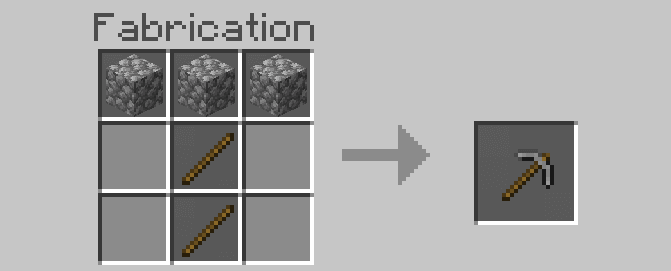
Stone pickaxe:
(2 wooden sticks + 3 cobblestone blocks)
Useful to mine minerals such as stone, coal, iron, bronze, gold, etc.
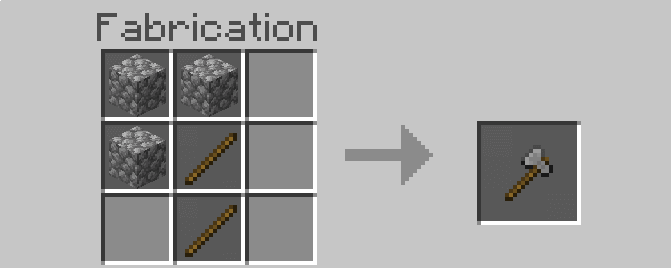
The stone axe :
(2 wooden sticks + 3 cobblestone blocks)
Use it to harvest wood by hitting trees.

The stone sword :
(1 wooden stick + 2 cobblestone blocks)
Useful to kill animals and enemies.
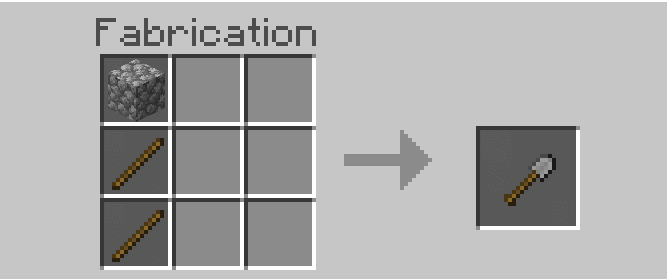
The stone shovel :
(2 wooden sticks+ 1 cobblestone block)
Uses include digging and harvesting dirt, sand, gravel or clay.
Harvesting resources and food
We are going to kill animals to collect meat to feed ourselves. To do this, we will hit an animal several times with our stone sword. We can also collect extra wood, because it is always very useful to have some. Once we break the whole trunk, the tree will disappear. It is therefore useful to replant the tree to renew the resources. In addition to the meat that will allow us to feed ourselves and therefore increase our healthbar, animals can also provide us with various materials such as leather, feathers and wool.

Core resources
Your tools will allow you to collect various resources that can then be converted into materials. These resources are essential to build tools, homes and furniture that will be very useful to you as you evolve in the game. Basic resources include:

Logs :
This is what you get when you destroy trees. Appearance of the logs depends on the type of tree you harvested it from.
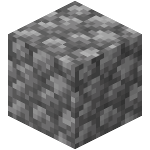
Cobblestone :
Basic stone you can harvest using your pickaxe.
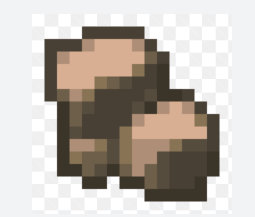
Iron ore :
Can be found in iron blocks, often mixed with cobblestone blocks. Iron can be mined deep underground in the mines or caves.

Coal :
Coal can be obtained by mining coal blocks with a pickaxe, or by burning wood in an oven. Not unlike iron, it can be found deeper underground.
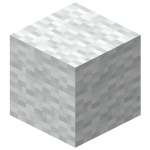
Wool :
Wool is obtained by killing or shearing a sheep (using shears). Wool color will usually match the color of the sheep, but it can be dyed. Wool is a core material used to craft beds.
Animals
Most animals are passive creatures. Some species might get agressive if you attack them. Here are the most common animals you might encounter during your first game :
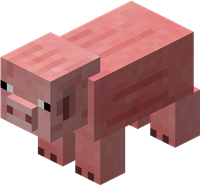
Pig :
Drops raw pork when killed. Can be used as a mount with a saddle.
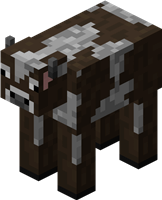
Cow :
Drops raw beef, milk and leather when killed.
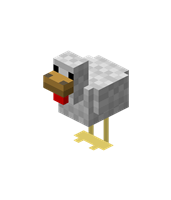
Chicken :
Will drop raw chicken when killed, and eggs and feathers.
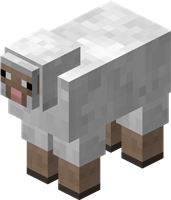
Sheep :
Will give you wool when sheared or killed. Sheep can be black, white, light gray, dark gray and even pink.

Wolf :
Commonly found in the forest. Won’t attack you unless triggered. Can be tamed using a bone and made into a loyal pet.

Bee :
Bees won’t attack you unless you attack the hive. They produce honey and drop pollen that can be used as fertilizer for your crops.
Building a rudimentary shelter
Our first shelter will simply be a hole. First of all, you have to find a hill and dig a space within the hill. Before nightfall, we will have to enter our burrow and plug the entrance so that the monsters can not enter. It is not advisable to fight the enemies the first night if you want to survive. Night phase is as long as the day, so it will take a little time. This will allow us to set up our shelter and craft some useful things.

Spend the night and set up your shelter
First, we will build an oven (8 blocks of stone) using our workbench. The oven works with fuel (wood or coal) and what you want to cook (food or resource to process). As it is dark, we will light up the place. To do this, coal will be needed. If you do not have any coal, it is possible to produce it by baking logs in the oven. It will allow us to make torches (1 stick + 1 coal) that will illuminate your shelter. If we feel cramped, we can enlarge our burrow by digging a little more. Then you can start cooking the meat you have harvested. Indeed, the hunger bar will drop and it is essential to feed yourself to survive. In order to make room in our inventory, it would be wise to make a chest (8 cubes of boards).
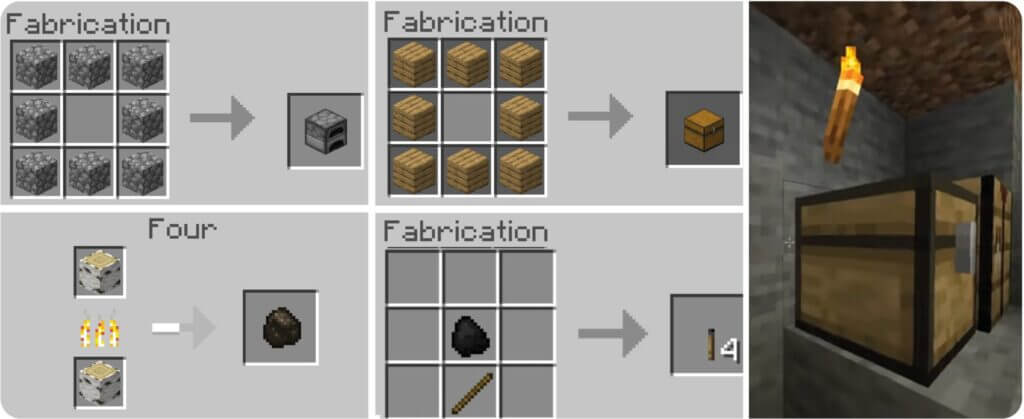
If you managed to find wool, then you can make the bed. The bed is useful, because it will allow you to go directly to the day and so you will no longer have to wait to pass the time all night. Beds also act as a spawn point when you die.

Explore
Once the basics are established, you can go exploring, discover the different biomes of an infinite world. Collect and transform your resources and evolve in the game as you wish. You will be able to make more and more elaborate tools and objects. You will be able to evolve your shelter and build an increasingly elaborate home with the chosen materials. Tame animals or grow plants. Fight monsters that are increasingly difficult to defeat. A world of possibilities awaits you!

